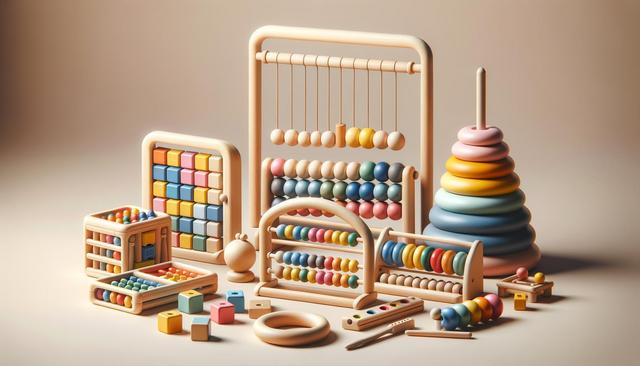Encouraging Early Development with Toddler Learning Toys
Toddler learning toys play a meaningful role in shaping critical skills during early childhood development.

The Importance of Learning Through Play
During the toddler years, children experience rapid cognitive, physical, and emotional growth. Learning toys are not just fun — they are essential tools that help toddlers explore their world, develop social skills, and build a foundation for lifelong learning. These toys are designed to promote developmental milestones through sensory engagement, problem-solving activities, and imaginative play. For example, stacking blocks help with fine motor skills and spatial awareness, while musical toys can enhance auditory development and rhythm recognition.
Play-based learning encourages toddlers to experiment, make mistakes, and try again, which supports resilience and independent thinking. By engaging with different textures, colors, and sounds, toddlers begin to make connections between their actions and the effects they produce. The right learning toys introduce concepts like cause and effect, object permanence, and hand-eye coordination—all in a way that feels natural and enjoyable.
Types of Toddler Learning Toys
There’s a wide range of learning toys specifically designed for toddlers, each targeting unique areas of development. Some toys focus on physical coordination, while others strengthen cognitive or social skills. Here are some common types of toddler learning toys:
- Shape sorters: Help toddlers recognize shapes and improve hand-eye coordination
- Building blocks: Foster creativity, spatial reasoning, and motor skills
- Interactive books: Introduce vocabulary, colors, and storytelling
- Musical instruments: Support auditory development and rhythm awareness
- Role-playing sets: Encourage social interaction and imagination
When selecting toys, consider age-appropriate options that match a toddler’s current developmental stage. Toys that are too advanced might cause frustration, while those that are too simple may not provide enough stimulation. Well-made learning toys often grow with the child, offering new challenges as their skills evolve.
Choosing Safe and Engaging Options
Safety is a top priority when choosing toddler learning toys. Since toddlers explore with their hands and mouths, all toys should be free from small parts that could pose choking hazards. Avoid toys with toxic materials like lead paint or those with sharp edges. Look for items that are labeled “non-toxic” and meet safety standards established by recognized organizations.
In addition to safety, the toy’s ability to engage a child is equally important. Bright colors, varied textures, and interactive elements like buttons, levers, or sounds can hold a toddler’s attention and encourage repeat play. Toys that allow for open-ended play—such as blocks or pretend kitchen sets—tend to offer more value as they can be used in multiple ways, supporting creativity and problem-solving.
When assessing a toy’s engagement level, observe how the child interacts with it. Does the toy stimulate curiosity? Does it encourage exploration or communication? These are useful indicators of a toy’s educational impact.
Supporting Developmental Milestones
Each toddler develops at their own pace, but learning toys can support key milestones across various domains. For instance, toys that require grasping and manipulation help improve fine motor skills and hand strength. Meanwhile, puzzles and matching games promote cognitive abilities such as memory, attention span, and logic.
Here are some examples of how toys align with developmental goals:
- Gross motor skills: Ride-on toys and push-pull toys support balance and coordination
- Language development: Talking toys and audio books introduce new words and phrases
- Social-emotional growth: Dolls and animal figures encourage empathy and role play
Many toys also support joint play between toddlers and caregivers, creating opportunities for bonding and learning together. Pointing out colors, naming objects, or following simple instructions during playtime can boost a child’s language and comprehension skills.
Encouraging Independent and Cooperative Play
While toddlers often play alongside others rather than with them, learning toys can gently guide them toward cooperative play. Toys that require turn-taking, sharing, or collaborative problem-solving lay the groundwork for social skills that become essential in preschool and beyond. Board games with simple rules or building sets that can be used by multiple children are great for this purpose.
Encouraging independent play is also important. It teaches toddlers how to entertain themselves, make choices, and build confidence. Toys that offer a degree of autonomy—like art supplies or sensory bins—allow children to explore their interests at their own pace. This kind of play can boost attention span and foster a sense of accomplishment.
Balancing both types of play—independent and cooperative—ensures that toddlers are developing a wide range of skills. Parents and caregivers can support this by offering a variety of toys and observing how the child prefers to engage with them in different settings.
Conclusion: Building a Strong Foundation Through Play
Toddler learning toys are much more than entertainment—they are essential tools that support healthy development across multiple domains. By choosing safe, engaging, and age-appropriate toys, caregivers can encourage curiosity, creativity, and growth. Whether playing independently or with others, toddlers benefit greatly from play experiences that challenge their minds and bodies in meaningful ways. Investing in a thoughtful selection of learning toys can contribute to a strong educational foundation that lasts well beyond the toddler years.